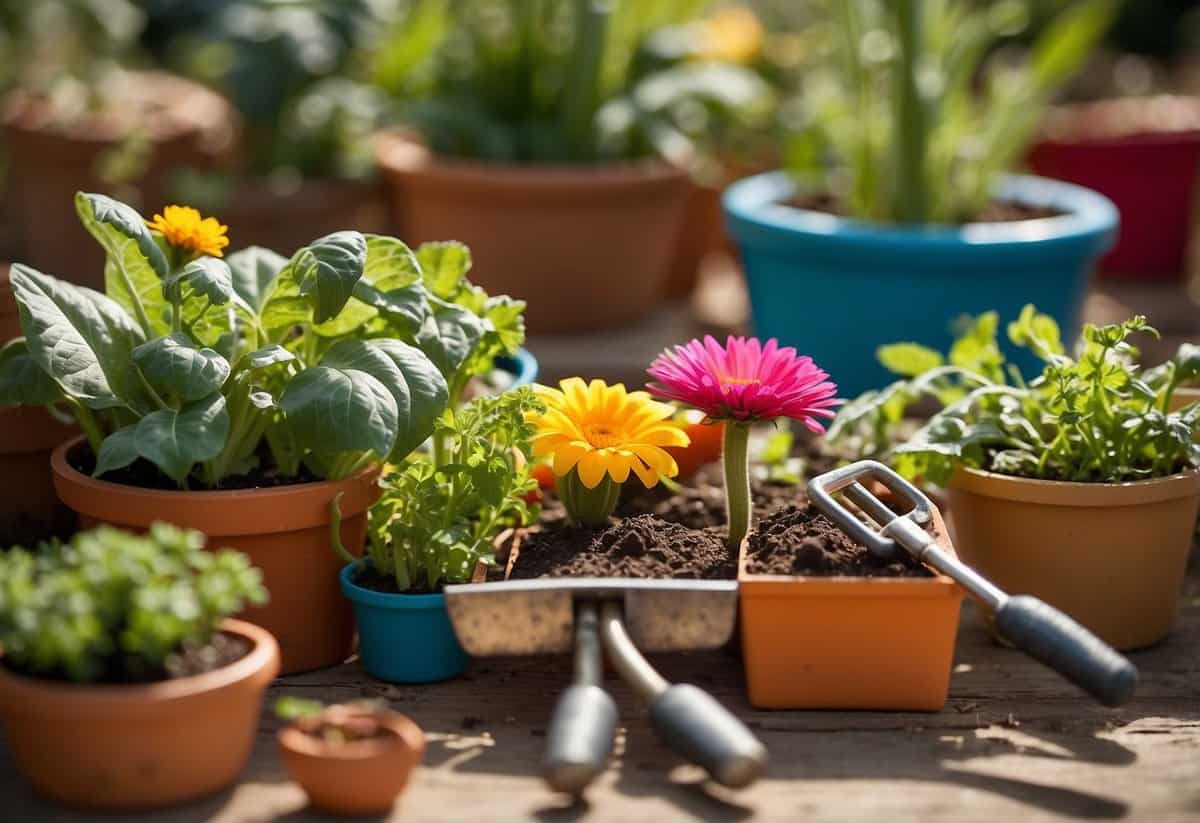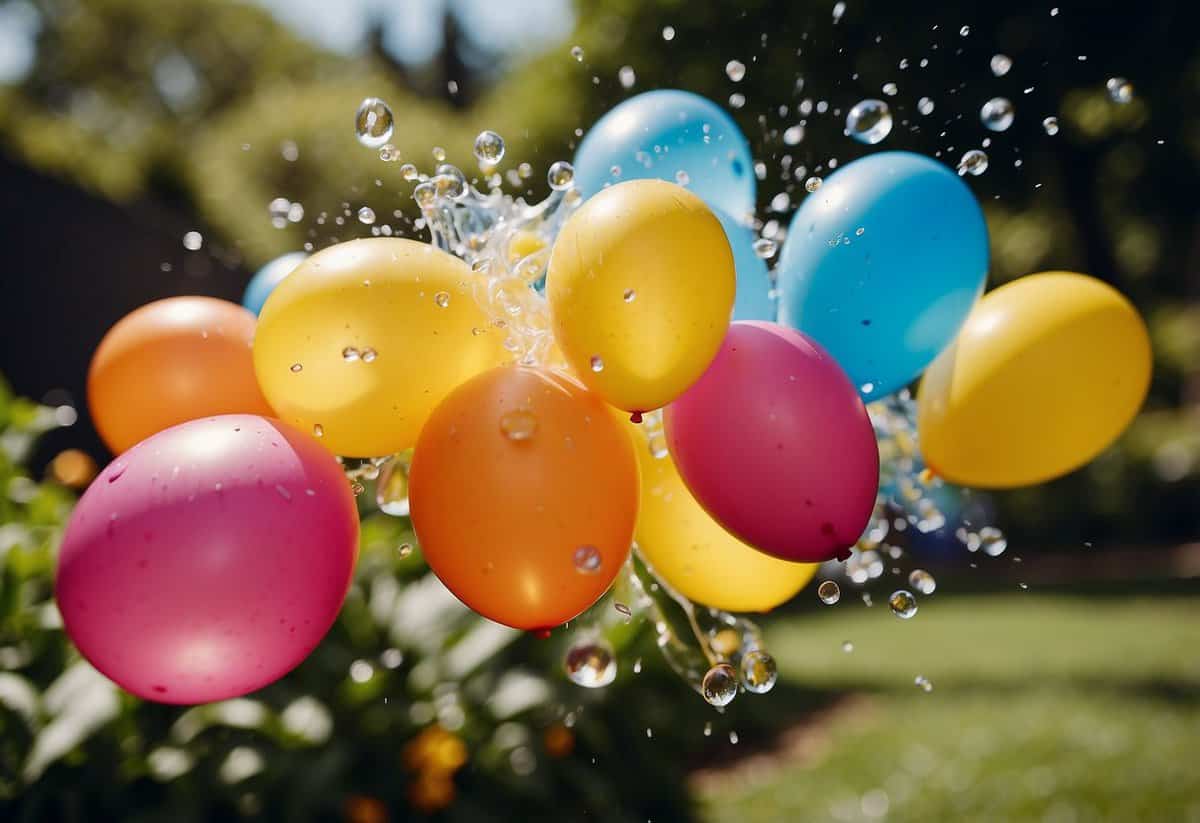Garden Tips for Kids: Fun and Easy Ways to Grow Plants
Gardening with kids can be a fun and educational experience for everyone involved. It’s a great way to spend quality time outdoors, and it also teaches children about nature, responsibility, and patience. What better way to engage your children than through the wonders of gardening?

Imagine the joy on their faces when they see the first sprout from a seed they planted or taste a vegetable they helped grow. Engaging kids in gardening creates lasting memories and instills a love for nature that can last a lifetime. Whether you have a spacious backyard or just a few pots on a balcony, gardening with your kids is a rewarding adventure.
1) Fairy Garden Corners

Creating a fairy garden corner is a fun way to add magic to your yard. Start by choosing a small spot or a container. Fill it with soil and add kid-friendly plants like marigolds and moss.
Next, include miniature accessories. Think fairy figurines, tiny mushrooms, and maybe a small fairy house made from a flowerpot. For more ideas, check out these fairy garden designs and fairy garden accessories. Kids will love watching their magical garden grow!
2) Sunflower Pipe Cleaners

Making sunflower pipe cleaners is a fun and easy activity for kids. You’ll need some yellow pipe cleaners, scissors, and a glue gun.
First, bend a yellow pipe cleaner to make a petal shape. Twist it at the end and bend again to form more petals.
Once all petals are made, glue them together in the center. You can find more detailed steps here.
3) Painted Rock Labels

Painted rock labels are a fun way to keep track of your garden plants.
First, find some smooth, flat rocks. You can gather them from your yard or a nearby park.
Clean the rocks with water and soap. Dry them off with a towel.
Next, use acrylic paints to decorate the rocks. Write the names of your plants on them.
When you’re done painting, let the rocks dry. For extra protection, spray them with a clear sealer.
Place the painted rocks in your garden to label your plants. It’s creative and helps you remember what’s growing!
4) Miniature Garden Tools

Miniature garden tools are perfect for kids. They are small, light, and easy to handle.
You can make your own by using simple materials. Try wrapping extra aluminum flaps around the bottom of wooden dowels.
Store-bought options are also great. Look for a child-safe garden tool set that includes items like a hoe, rake, and shovel. These sets are durable and just the right size for little hands.
A set of good quality tools can make gardening more exciting for kids. They feel like real gardeners, ready to dig and plant.
5) Dino Planter Project

Create a dino planter to bring some prehistoric fun to your garden!
Start by picking a large pot or container. Fill the bottom with a layer of rocks for drainage. Then, add potting soil up to about an inch from the top.
Choose plants that remind you of the dinosaur era. Fennel, rosemary, and spinach are great choices. Place your plants in the soil, creating little “forests” or an oasis.
Finally, add some toy dinosaurs to complete the look. You can create rock formations or add small boulders for extra fun. Your dino planter is ready!
6) Birdseed Ornaments

Making birdseed ornaments is a fun way to attract birds to your garden.
Start by mixing gelatin with cold water, then add boiling water to dissolve it. Add corn syrup, and stir well.
Mix in birdseed until combined. Press the mixture into cookie cutters or molds. Let them dry before hanging them up for the birds to enjoy.
For detailed steps, check out this recipe.
7) Spaghetti Seedlings

Growing a “spaghetti” garden can be a fun project. Start with tomato, basil, and oregano plants. These are all key ingredients for spaghetti sauce.
Tomato plants thrive in full sun and need regular watering. Basil grows well in containers or garden beds. Oregano is a hardy herb that can tolerate various conditions.
Plant your seedlings in sunny spots. Water them regularly and watch them grow. Soon you’ll have fresh ingredients for homemade spaghetti sauce. For more detailed tips on growing these plants, check out this guide.
8) Butterfly Houses

Building a butterfly house is a great way to attract beautiful butterflies to your garden. You can make one using easy steps that involve cutting wood, drilling holes, and putting the pieces together. It’s a fun project to do with kids.
To make the butterfly house cozy, add some rotting fruit or sugar water inside. Plant native flowers nearby to attract more butterflies. Place the house in a sunny spot because butterflies love the sun. It helps keep them warm and active. Happy butterfly watching!
9) Water Balloon Splash

One of the best ways to cool off in the garden is a water balloon splash. Gather a bucket full of water balloons and invite your friends to join.
You can play games like water balloon toss or have a water balloon fight. Make sure to keep buckets filled with balloons for easy access.
Aim to stay safe and never throw balloons at faces. Picking up the leftover balloon pieces keeps the garden tidy. For more ideas, check out these water balloon games for more ways to have fun.
10) Mud Pie Kitchen

Creating a mud pie kitchen is a fantastic outdoor activity for kids. It sparks creativity and gets them involved in nature.
You can use old pallets, wood, or cardboard boxes as the base. Collect bowls, pots, and pans from thrift stores or garage sales.
Small sticks can be used for drawing or writing in the mud. These simple supplies can turn your backyard into a fun play area.
For more ideas, check out DIY Mud Pie Kitchen Ideas. This will give you additional tips to enhance your mud kitchen project.
Getting Started With Garden Planning

Begin your gardening journey by selecting plants that are easy for children to grow and designing a garden that encourages learning and interaction.
Choosing Kid-Friendly Plants
Start with plants that grow quickly to keep kids interested. Radishes and lettuce are great because they sprout in just a few days. Also think about flowers like sunflowers and nasturtiums, as they are low-maintenance and visually appealing.
Make sure to choose plants that are safe for kids. Avoid plants that may be toxic or have thorns. Herbs like basil, mint, and parsley are safe and fun to grow. They also introduce children to different scents and flavors.
Consider the local climate when choosing plants. Vegetables like carrots and peas are good choices for most climates. Use pots and containers if your outdoor space is limited. This way, kids can easily manage their own small gardens.
Designing an Interactive Garden
Create different zones in the garden, each with a specific purpose. A planting zone can be for veggies, while another may be a flower zone. Leave some space for a sandbox or a play area to mix gardening with playtime.
Raised beds are a fantastic option. They are easier for kids to reach and reduce the work needed to clear weeds. Include paths made of stones or mulch to make the garden more inviting and accessible.
Add some educational elements. Place labels on the plants with their names and a fact or two. A worm bin can teach kids about composting and the importance of worms to the garden. Use colorful signs to mark different areas, making the garden both fun and informative.
Planting Tips For Kids

Teaching kids to plant helps them learn about nature and responsibility. Below you’ll find simple planting techniques and tips for caring for young plants, making gardening fun and educational for children.
Simple Planting Techniques
Start with easy plants like radishes or sunflowers. These grow quickly, so kids won’t have to wait too long to see results.
Give each child their own small plot, container, or raised bed. This helps them feel ownership and pride in their plants.
Make planting fun by letting kids pick out seeds. Show them how to poke small holes in the soil with their fingers and drop in the seeds. Then, gently cover the seeds with soil and water them.
Using colorful plant markers, like painted rocks or craft sticks, makes the garden more exciting. Encourage kids to decorate these markers to identify where each type of seed is planted.
Caring For Young Plants
Once seeds are planted, they need water, sunlight, and a little care to grow. Let kids be in charge of watering their plants. Teach them to water gently with a small can or spray bottle.
Explain that plants need sunlight to grow. Help kids find a sunny spot for their garden. If growing indoors, place plants near a window with plenty of light.
Show kids how to check for weeds and gently remove them. Weeding helps plants get more nutrients and grow better.
Involve kids in making natural plant food using compost or organic fertilizers. This teaches them sustainability and the importance of healthy soil.
Encourage regular visits to the garden to check on plant growth. Celebrate small milestones, like the first sprout or flower, to keep kids motivated.







